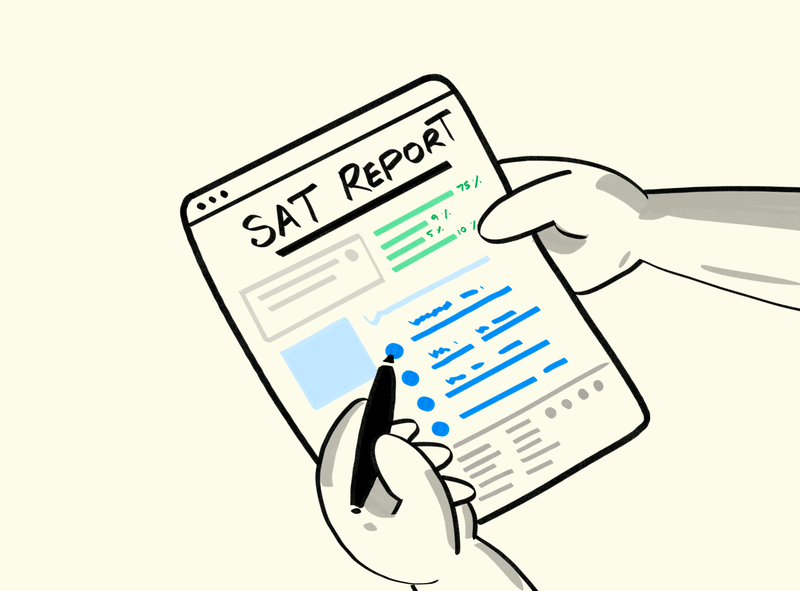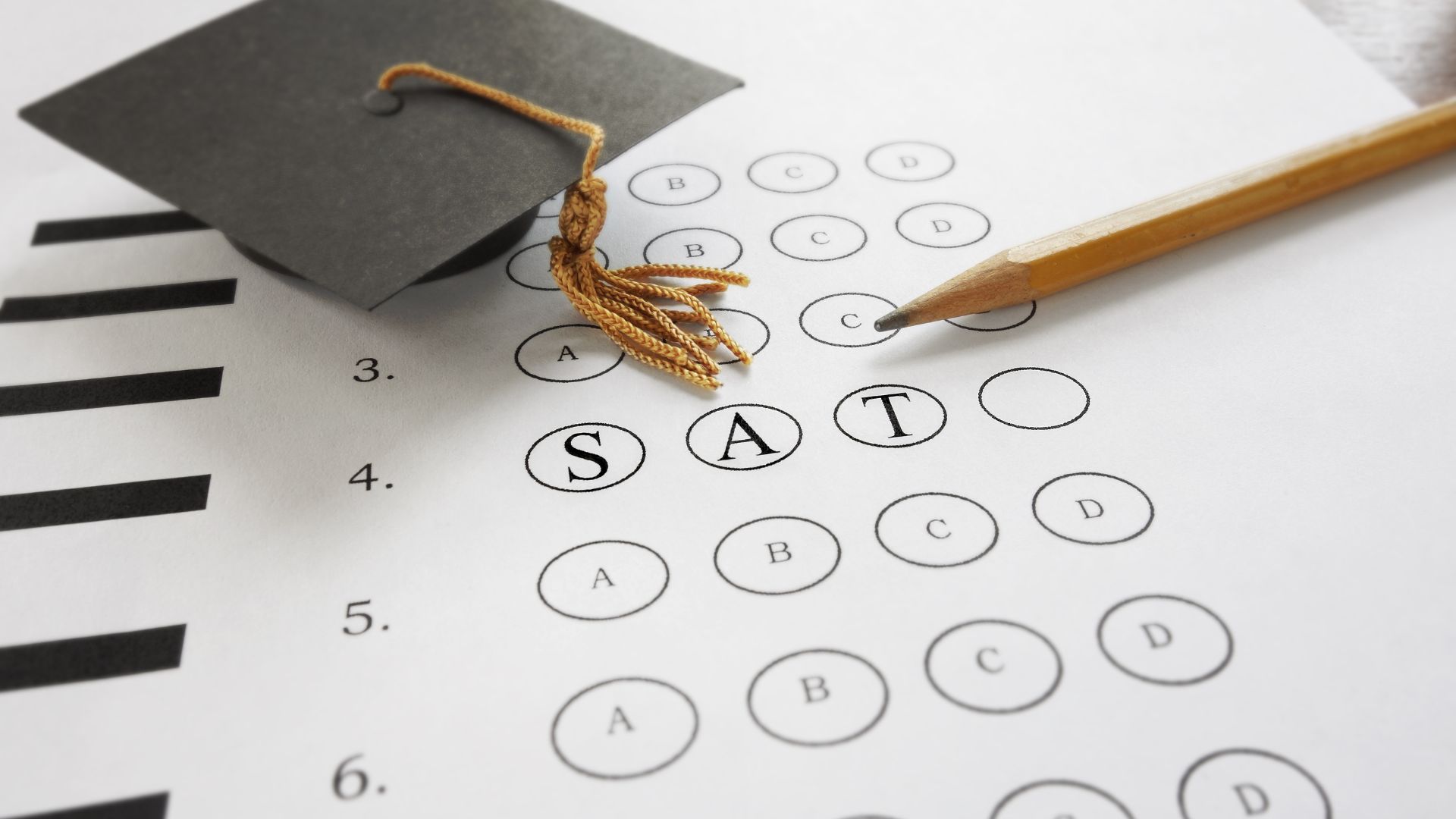Question:
What is correction?
Solution:
Welcome! This guide will provide a comprehensive understanding of correlation as it relates to the SAT. We’ll cover the definition of correlation, how to interpret correlation coefficients, and some common pitfalls to avoid. By the end of this guide, you’ll be well-equipped to tackle correlation questions on the SAT.
#### What is Correlation?
Correlation measures the **strength and direction of a linear relationship** between two variables. It describes how well the change in one variable predicts the change in another. It’s important to emphasize that correlation does **not** imply causation. Just because two variables are correlated does not mean that one causes the other.
#### The Correlation Coefficient (r)
The correlation coefficient, denoted by *r*, is a numerical value that ranges from -1 to +1. It quantifies the strength and direction of the linear relationship.
* **r = +1:** Perfect positive correlation. As one variable increases, the other increases proportionally.
* **r = -1:** Perfect negative correlation. As one variable increases, the other decreases proportionally.
* **r = 0:** No linear correlation. There is no apparent linear relationship between the two variables.
* **0 < r < 1:** Positive correlation. As one variable increases, the other tends to increase. The closer *r* is to 1, the stronger the correlation.
* **-1 < r 0.7:** Strong correlation
* **0.3 < |r| ≤ 0.7:** Moderate correlation
* **|r| ≤ 0.3:** Weak correlation
#### Calculating the Correlation Coefficient
While the SAT typically won't require you to manually calculate the correlation coefficient, it's helpful to understand the formula conceptually. The formula for the Pearson correlation coefficient (the most common type) is:
$r = frac{sum_{i=1}^{n}(x_i – bar{x})(y_i – bar{y})}{sqrt{sum_{i=1}^{n}(x_i – bar{x})^2} sqrt{sum_{i=1}^{n}(y_i – bar{y})^2}}$
Where:
* $x_i$ and $y_i$ are the individual data points.
* $bar{x}$ and $bar{y}$ are the means of the x and y variables, respectively.
* n is the number of data points.
The SAT will likely provide the *r* value or ask you to estimate it from a scatterplot.
#### Worked Examples
##### Example 1: Interpreting a Scatterplot
Imagine a scatterplot showing the relationship between hours studied and exam scores. The points generally trend upwards from left to right, and they cluster relatively closely around an imaginary straight line. The correlation coefficient is likely to be a positive value close to 1 (e.g., r = 0.85), indicating a strong positive correlation. This suggests that as study time increases, exam scores tend to increase as well.
##### Example 2: Identifying Negative Correlation
Consider a scatterplot showing the relationship between the age of a car and its resale value. The points generally trend downwards from left to right. The correlation coefficient is likely to be a negative value (e.g., r = -0.70), indicating a moderate negative correlation. This suggests that as the age of the car increases, its resale value tends to decrease.
#### Common Mistakes to Avoid
* **Confusing Correlation with Causation:** This is the most common mistake. Remember that correlation only indicates a relationship, not a cause-and-effect link. There may be other factors (lurking variables) influencing both variables.
* **Assuming Linearity:** The correlation coefficient *r* only measures the strength of a *linear* relationship. If the relationship is non-linear (e.g., curved), *r* may be close to zero even if there is a strong relationship. Always examine the scatterplot.
* **Ignoring Outliers:** Outliers can significantly affect the correlation coefficient. A single outlier can either strengthen or weaken the apparent correlation.
* **Misinterpreting the Sign:** A negative correlation is still a correlation. It simply means that the variables move in opposite directions.
#### Tips for the SAT
* **Visualize:** Always try to visualize the scatterplot represented by a given correlation coefficient.
* **Focus on the Direction and Strength:** Pay attention to both the sign (positive or negative) and the magnitude (close to 0 or close to 1) of the correlation coefficient.
* **Read Carefully:** Pay close attention to the wording of the question, especially when it comes to causation vs. correlation.
#### Real-World Applications
Correlation is used in many fields, including:
* **Finance:** Analyzing the relationship between stock prices.
* **Healthcare:** Studying the correlation between lifestyle factors and disease risk.
* **Marketing:** Examining the relationship between advertising spending and sales.
* **Social Sciences:** Investigating the correlation between education level and income.
#### Conclusion
Understanding correlation is crucial for success on the SAT. By grasping the concept of the correlation coefficient, its interpretation, and the common pitfalls, you'll be well-prepared to tackle correlation questions effectively. Remember to focus on the strength and direction of the relationship and avoid assuming causation. Good luck!
{
“@context”: “https://schema.org”,
“@type”: “FAQPage”,
“mainEntity”: {
“@type”: “Question”,
“name”: “What is correction?”,
“acceptedAnswer”: {
“@type”: “Answer”,
“text”: “### Understanding Correlation for the SATnnWelcome! This guide will provide a comprehensive understanding of correlation as it relates to the SAT. We’ll cover the definition of correlation, how to interpret correlation coefficients, and some common pitfalls to avoid. By the end of this guide, you’ll be well-equipped to tackle correlation questions on the SAT.nn#### What is Correlation?nnCorrelation measures the **strength and direction of a linear relationship** between two variables. It describes how well the change in one variable predicts the change in another. It’s important to emphasize that correlation does **not** imply causation. Just because two variables are correlated does not mean that one causes the other.nn#### The Correlation Coefficient (r)nnThe correlation coefficient, denoted by *r*, is a numerical value that ranges from -1 to +1. It quantifies the strength and direction of the linear relationship.nn* **r = +1:** Perfect positive correlation. As one variable increases, the other increases proportionally.n* **r = -1:** Perfect negative correlation. As one variable increases, the other decreases proportionally.n* **r = 0:** No linear correlation. There is no apparent linear relationship between the two variables.n* **0 < r < 1:** Positive correlation. As one variable increases, the other tends to increase. The closer *r* is to 1, the stronger the correlation.n* **-1 < r 0.7:** Strong correlationn* **0.3 < |r| u2264 0.7:** Moderate correlationn* **|r| u2264 0.3:** Weak correlationnn#### Calculating the Correlation CoefficientnnWhile the SAT typically won't require you to manually calculate the correlation coefficient, it's helpful to understand the formula conceptually. The formula for the Pearson correlation coefficient (the most common type) is:nn$r = \frac{\sum_{i=1}^{n}(x_i – \bar{x})(y_i – \bar{y})}{\sqrt{\sum_{i=1}^{n}(x_i – \bar{x})^2} \sqrt{\sum_{i=1}^{n}(y_i – \bar{y})^2}}$nnWhere:nn* $x_i$ and $y_i$ are the individual data points.n* $\bar{x}$ and $\bar{y}$ are the means of the x and y variables, respectively.n* n is the number of data points.nnThe SAT will likely provide the *r* value or ask you to estimate it from a scatterplot.nn#### Worked Examplesnn##### Example 1: Interpreting a ScatterplotnnImagine a scatterplot showing the relationship between hours studied and exam scores. The points generally trend upwards from left to right, and they cluster relatively closely around an imaginary straight line. The correlation coefficient is likely to be a positive value close to 1 (e.g., r = 0.85), indicating a strong positive correlation. This suggests that as study time increases, exam scores tend to increase as well.nn##### Example 2: Identifying Negative CorrelationnnConsider a scatterplot showing the relationship between the age of a car and its resale value. The points generally trend downwards from left to right. The correlation coefficient is likely to be a negative value (e.g., r = -0.70), indicating a moderate negative correlation. This suggests that as the age of the car increases, its resale value tends to decrease.nn#### Common Mistakes to Avoidnn* **Confusing Correlation with Causation:** This is the most common mistake. Remember that correlation only indicates a relationship, not a cause-and-effect link. There may be other factors (lurking variables) influencing both variables.n* **Assuming Linearity:** The correlation coefficient *r* only measures the strength of a *linear* relationship. If the relationship is non-linear (e.g., curved), *r* may be close to zero even if there is a strong relationship. Always examine the scatterplot.n* **Ignoring Outliers:** Outliers can significantly affect the correlation coefficient. A single outlier can either strengthen or weaken the apparent correlation.n* **Misinterpreting the Sign:** A negative correlation is still a correlation. It simply means that the variables move in opposite directions.nn#### Tips for the SATnn* **Visualize:** Always try to visualize the scatterplot represented by a given correlation coefficient.n* **Focus on the Direction and Strength:** Pay attention to both the sign (positive or negative) and the magnitude (close to 0 or close to 1) of the correlation coefficient.n* **Read Carefully:** Pay close attention to the wording of the question, especially when it comes to causation vs. correlation.nn#### Real-World ApplicationsnnCorrelation is used in many fields, including:nn* **Finance:** Analyzing the relationship between stock prices.n* **Healthcare:** Studying the correlation between lifestyle factors and disease risk.n* **Marketing:** Examining the relationship between advertising spending and sales.n* **Social Sciences:** Investigating the correlation between education level and income.nn#### ConclusionnnUnderstanding correlation is crucial for success on the SAT. By grasping the concept of the correlation coefficient, its interpretation, and the common pitfalls, you'll be well-prepared to tackle correlation questions effectively. Remember to focus on the strength and direction of the relationship and avoid assuming causation. Good luck!"
}
}
}


